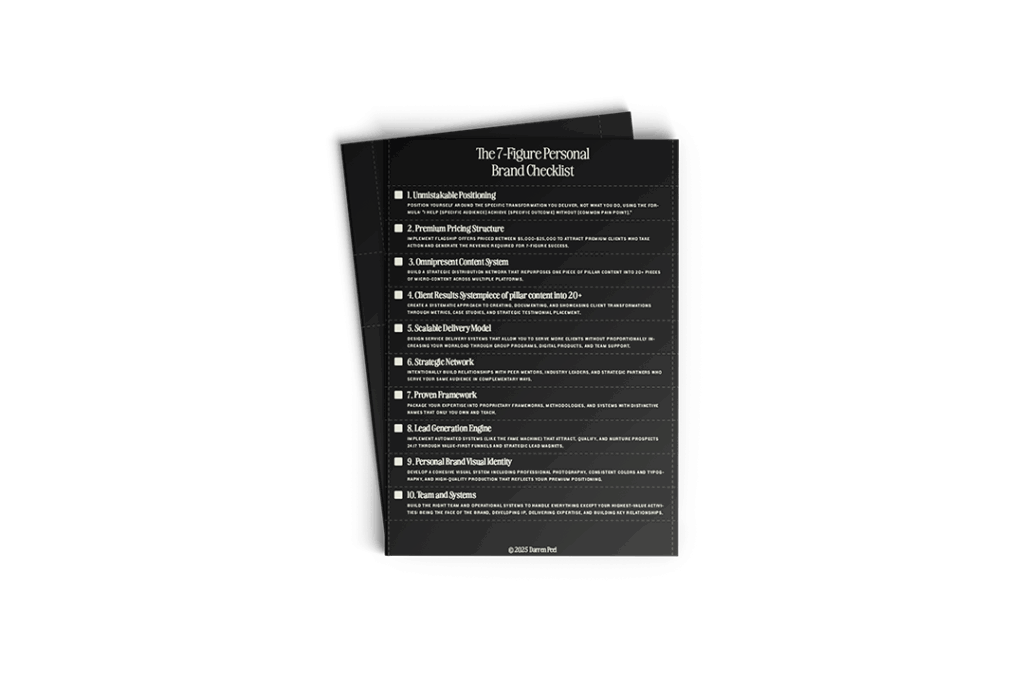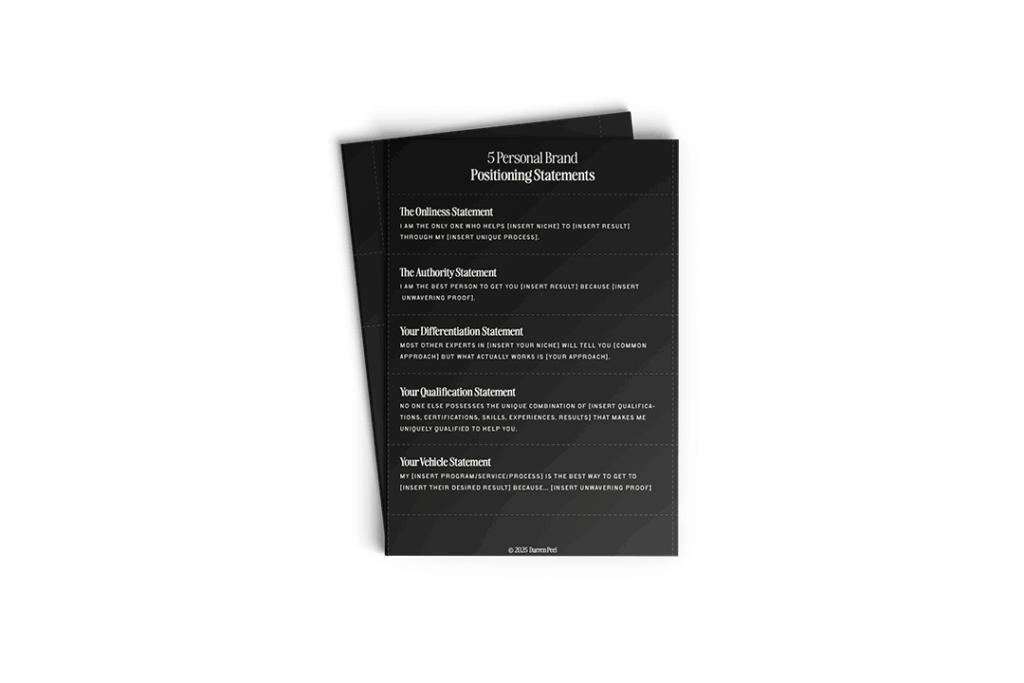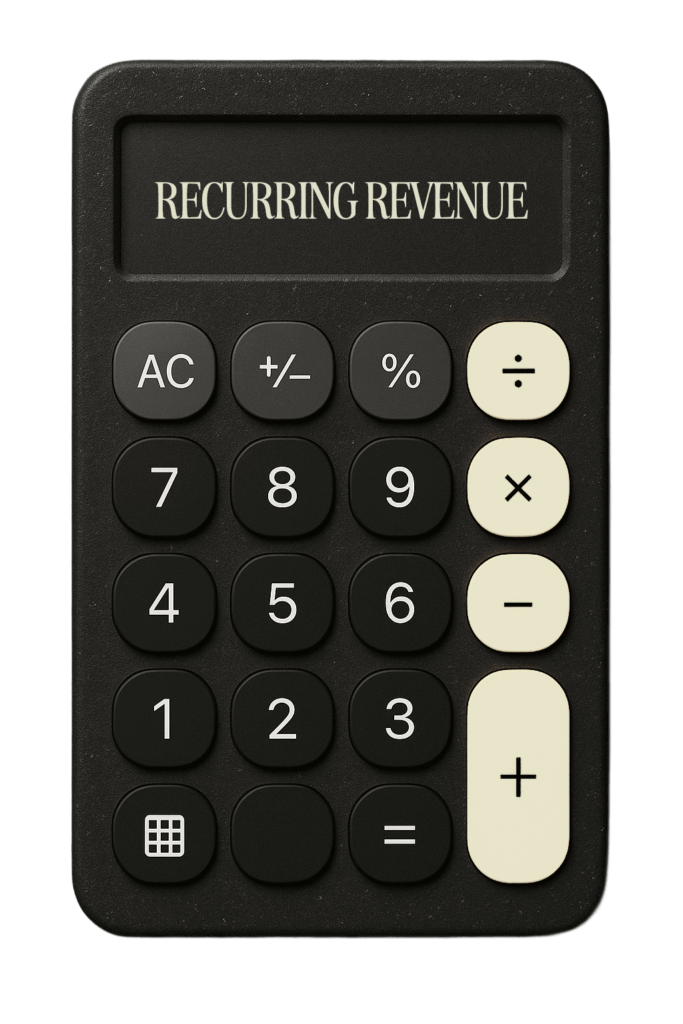Are you struggling to stand out in a crowded marketplace where everyone seems to be saying the same thing? What if I told you that 183 successful personal brands have used these 5 positioning statements to completely transform how they communicate their value and attract premium clients?
Most entrepreneurs and personal brands fail not because they lack expertise, but because they can’t clearly articulate what makes them different. Without crystal-clear positioning, you’re just another voice in an ocean of experts, competing on price rather than value.
In this comprehensive guide, you’ll discover the exact 5 positioning statement templates that have helped coaches, consultants, and entrepreneurs command premium prices and stand out as authorities in their industries.
What Are Personal Brand Positioning Statements?
Personal brand positioning statements are strategic declarations that clearly communicate what your brand stands for and how you’re different from everyone else in your industry. These aren’t just fancy marketing jargon – they’re powerful psychological tools that create clarity for both you and your potential clients.
When crafted correctly, positioning statements eliminate confusion, build authority, and make your unique value proposition irresistible to your ideal audience. They transform your marketing from convincing to connecting.
Why Personal Brand Positioning Matters
The Psychology Behind Positioning
Studies show that perceived expertise increases trust by 83%. When you can clearly articulate your unique position in the market, you trigger what psychologists call the “expertise heuristic” – a mental shortcut where people assume that if you’re positioned as an expert, your solutions must work.
The Business Impact
Clear positioning allows you to:
- Command premium prices with confidence
- Attract ideal clients who already want to work with you
- Stand out in crowded markets
- Build unshakeable confidence in your expertise
- Create marketing messages that actually convert
The 5 Essential Personal Brand Positioning Statements
1. The Onliness Statement
Template: “I am the only one who helps [insert niche] to [insert result] through my [insert unique process]”
Why It Works: This statement immediately sets you apart by claiming territory that’s uniquely yours. It’s not about being better than your competition – it’s about being the only one who does what you do for your specific clientele.
Example: “I am the only personal brand consultant who helps coaches, consultants, and entrepreneurs to double their revenue while working 20 fewer hours per week through my Profit Time Matrix methodology.”
Key Elements:
- Specific niche identification
- Quantifiable results
- Unique methodology or process name
Success Story: A fitness coach was struggling to stand out among thousands of competitors. After crafting her Onliness Statement – “I am the only fitness coach who helps busy executives achieve sustainable weight loss through my Boardroom Body Protocol” – she not only saw increased inquiries but began attracting her dream clients: busy executives.
2. The Authority Statement
Template: “I am the best person to get you [insert result] because [insert unwavering proof]”
Why It Works: This statement crushes credibility objections before they arise. When you boldly claim expertise and back it with concrete evidence, you trigger the expertise heuristic that makes people automatically trust your solutions.
Example: “I am the best person to get you to six figures in your coaching business because I’ve helped 127 coaches cross that threshold in the past three years and documented every step of the process.”
Critical Success Factors:
- Specific, irrefutable proof
- Concrete numbers over vague claims
- Documented results and processes
Pro Tip: Pair this statement with a testimonials page on your website listing actual client results for maximum impact.
3. The Differentiation Statement
Template: “Most other experts in [insert your niche] will tell you [common approach] but what actually works is [your approach]”
Why It Works: This statement creates cognitive dissonance by acknowledging that clients have heard conflicting advice, then positioning you as someone who’s discovered a better way. It triggers curiosity and establishes you as a thought leader, not a follower.
Example: “Most other experts in social media marketing will tell you that you need to be on every platform to succeed, but what actually works is mastering just one platform where your ideal clients already hang out and creating content that converts.”
The Psychology: When someone encounters this statement, they immediately want to know why the common approach is wrong and why yours is right. This curiosity gap compels them to learn more.
Success Story: A relationship coach used this approach: “Most other relationship coaches will tell you that communication is the key to fixing your marriage, but what actually works is rebuilding emotional safety first, which then naturally improves communication.” Not only did her content go viral, but she saw a significant increase in qualified leads.
4. The Qualification Statement
Template: “No one else possesses the unique combination of [insert qualifications, certifications, skills, experiences, results] that makes me uniquely qualified to help you”
Why It Works: This statement addresses the “why you?” question that’s always in prospects’ minds. It acknowledges that while others might offer similar services, your specific combination of experience and expertise is one-of-a-kind.
Example: “No one else possesses the unique combination of a decade in corporate marketing leadership, certified NLP training, and having personally built three 7-figure personal brands that makes me uniquely qualified to help you transform your expertise into a recognized brand.”
The Science: This leverages the “distinctiveness effect” – we remember and value things that stand out from the crowd. By highlighting your unique combination of qualifications, you become more memorable and valuable.
Important Note: Focus on 3-4 of your most impressive and relevant qualifications rather than listing every credential you have.
5. The Vehicle Statement
Template: “My [insert program/service/process] is the best way to get to [insert their desired result] because…”
Why It Works: This statement focuses on your methodology as the perfect vehicle to take clients from where they are to where they want to be. It creates urgency by positioning your solution as not just good, but optimal.
Example: “My Brand Authority Accelerator program is the best way to position yourself as a thought leader in your industry because it combines strategic content creation, media exposure, and backend monetization in a synchronized system that builds momentum exponentially rather than linearly.”
Key Insight: The most effective Vehicle Statements address why your approach is both effective AND efficient. People want the fastest, most reliable path to results.
Success Story: A fitness business mentorship client revised their Vehicle Statement to emphasize profit-first growth over revenue-chasing. This positioning helped them become one of the most successful programs in their space.
How to Implement These Positioning Statements
Strategic Deployment
The most successful personal brands don’t use all five statements at once. Instead, they strategically deploy them across different touchpoints:
- Website hero section: Lead with your Onliness Statement
- About page: Feature your Qualification Statement
- Sales calls: Leverage Authority and Vehicle Statements
- Content marketing: Use Differentiation Statements to create viral content
- Social media bios: Condensed versions of your Onliness Statement
Testing for Effectiveness
When crafting your statements, ask yourself:
- Is this specific enough to be memorable?
- Does this reflect my genuine strengths?
- Would this resonate with my ideal client?
- Is my proof concrete and irrefutable?
- Does this create curiosity or urgency?
Common Mistakes to Avoid
Mistake 1: Being Too Generic Vague statements like “I help people succeed” don’t create the contrast needed for effective positioning.
Mistake 2: Lacking Proof Claims without concrete evidence trigger skepticism rather than trust.
Mistake 3: Trying to Appeal to Everyone The more specific your positioning, the more powerful it becomes.
Mistake 4: Inconsistent Messaging Your positioning should be consistent across all marketing channels and touchpoints.
Tools and Resources
To help you implement these positioning statements effectively, consider creating:
Essential Tools:
- Personal Brand Positioning Workbook: Template sheets for each statement
- Competitive Positioning Canvas: Framework for analyzing your unique market position
- 7-Day Positioning Challenge: Step-by-step implementation guide
Frequently Asked Questions
Q: Can I use multiple positioning statements at the same time? A: Yes, but deploy them strategically across different touchpoints rather than overwhelming prospects with all five at once.
Q: What if I can’t think of a unique process or methodology? A: Focus on your unique combination of approaches, experiences, or the specific way you deliver results.
Q: How often should I update my positioning statements? A: Review them quarterly and update as your business evolves and you gain more experience and results.
Q: What if my competitors copy my positioning? A: True positioning is based on your authentic experience and methodology, making it difficult to replicate effectively.
Q: Should I include specific numbers in my Authority Statement? A: Yes, specific numbers are far more powerful than vague claims like “many clients” or “lots of success.”
Key Takeaways
- The Onliness Statement establishes your unique territory in the market
- The Authority Statement crushes credibility objections with concrete proof
- The Differentiation Statement positions you as an innovative thought leader
- The Qualification Statement highlights your unique background and experience
- The Vehicle Statement compels prospects to take action by positioning your solution as optimal
Next Steps
Immediate Actions:
- Download the positioning statement templates and complete each one
- Test your statements with trusted colleagues or clients for feedback
- Begin incorporating your strongest statement into your current marketing
Long-term Strategy:
- Deploy different statements across various marketing touchpoints
- Collect testimonials and case studies that support your positioning
- Continuously refine your statements as you gain more experience and results
The most successful personal brands understand that positioning isn’t just marketing – it’s strategy. When you can clearly articulate your unique value in a way that resonates deeply with your ideal clients, marketing becomes less about convincing and more about connecting.
Your positioning statements should reflect your genuine strengths and philosophy, not an invented persona. When you find the positioning that truly aligns with who you are and what you offer, you’ll discover that attracting premium clients becomes natural and sustainable.
Remember: clarity is power. The clearer you are about what makes you unique, the easier it becomes for the right people to find you, trust you, and invest in working with you.



